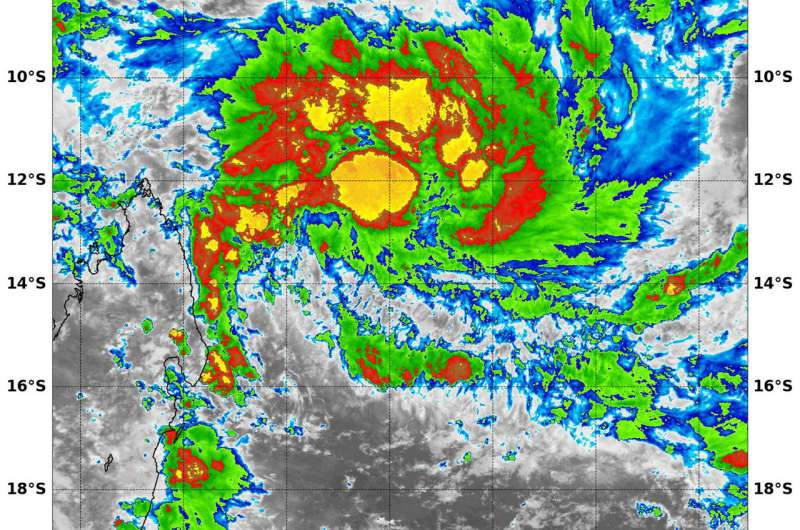An 'insider's look' at Tropical Cyclone 11S from NASA's Aqua Satellite

Infrared imagery provides valuable temperature data in storms, and when NASA's Aqua satellite flew over newly developed Tropical Cyclone 11S in the Southern Indian Ocean, its gathered that data allowing forecasters to see where the strongest storms were located within.
The Moderate Resolution Imaging Spectroradiometer is the instrument aboard NASA's Aqua satellite that provided the infrared data on Tropical Cyclone 11S. Imagery from March 2 at 5:05 a.m. EST (10:05 UTC) showed coldest cloud top temperatures in storms circling the low-level center of circulation and in a large fragmented band of thunderstorms in the northern quadrant on the tropical cyclone. Temperatures in those areas were as cold as minus 80 degrees Fahrenheit (minus 62.2 Celsius).Cloud top temperatures that cold indicate strong storms that have the capability to create heavy rain.
On March 2 at 10 a.m. EST (1500 UTC) Tropical Cyclone 11S had maximum sustained winds are near 45 knots (52 mph/74 kph). Tropical Cyclone 11S is expected to rapidly intensify by 55 knots (63 mph/102 kph) in 48 hours because of warm waters and low vertical wind shear.
It was located near 12.8 degrees south latitude and 54.1 degrees east longitude, approximately 478 nautical miles north of St Denis. 11S has tracked east-northeastward at 2 knots (2.3 mph/3.7 kph).
The Joint Typhoon Warning Center said that "as Tropical Cyclone 11S develops, it is expected to track southwestward under the influence of a building subtropical ridge (elongated area of high pressure) to the southeast. It is then expected to round the ridge axis and turn southeastward in three days." The current forecast track brings 11S along the east coast of Madagascar while its center remains at sea.
Provided by NASA's Goddard Space Flight Center





















